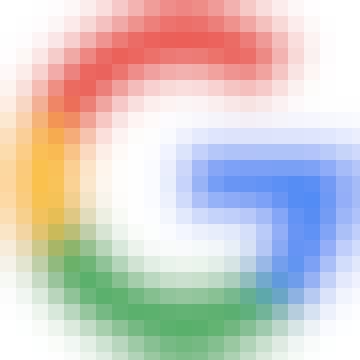The 7 Data Analysis Software You Need to Know
Understand the most common data analysis software available, and learn how to gain the skills needed to land an entry-level data analysis position.
![[Featured image] Man at laptop computer working on software](https://d3njjcbhbojbot.cloudfront.net/api/utilities/v1/imageproxy/https://images.ctfassets.net/wp1lcwdav1p1/3Qqy7y6LnD8cRCi1yzy6by/b7f1289a1531590f541f6039d72905b9/GettyImages-1132115579.jpg?w=1500&h=680&q=60&fit=fill&f=faces&fm=jpg&fl=progressive&auto=format%2Ccompress&dpr=1&w=1000)
Today, there is more data than ever. In fact, according to research conducted by Statista, the global volume of data created, captured, copied, and consumed is projected to reach 181 zettabytes by 2025 [1]. The result is a lot of data to be sorted, cleaned, analysed, and visualised.
Just as there is a lot of data, so too is there a lot of software and tools available to work with it Cloud-based data warehouses store huge amounts of business data. Some programs are specially designed for data modelling, and software visualises data in bright colours and diagrams. Faced with such an overwhelming choice, many inevitably wonder where to start.
We’re here to help. Rather than listing all the tools you might encounter in your professional career, we’ve compiled seven essential data analysis software you should know as you begin your data journey. Here, you’ll encounter some of the most common data analysis software, learn what each does, and discover why it matters. Ultimately, you’ll even find a suggested course to help you gain the skills you’ll need to land an entry-level data analyst position.

professional certificate
Google Data Analytics
Get on the fast track to a career in Data Analytics. In this certificate program, you’ll learn in-demand skills, and get AI training from Google experts. Learn at your own pace, no degree or experience required.
4.8
(154,521 ratings)
2,690,939 already enrolled
Beginner level
Average time: 6 month(s)
Learn at your own pace
Skills you'll build:
Spreadsheet Software, Data Management, Data Analysis, Business Communication, General Statistics, Business Analysis, Data Visualization, SQL, Data Cleansing, Developing a portfolio, Creating case studies, Metadata, Data Ethics, Spreadsheet, Data Collection, Data Calculations, Data Aggregation, Rstudio, R Markdown, R Programming, Presentation, Tableau Software, Sample Size Determination, Data Integrity, Decision-Making, Questioning, Problem Solving
1. Excel
Microsoft Excel is one of the most common software used for data analysis. In addition to offering spreadsheet functions capable of managing and organising large data sets, Excel also includes graphing tools and computing capabilities like automated summation or “AutoSum.” Excel also includes Analysis ToolPak, which features data analysis tools capable of performing variance, regression, and statistical analysis.
Excel’s simplicity and versatility make it a powerful data analysis tool suitable for managing, sorting, filtering, cleaning, analysing, and visualising data. If you’re just starting out in data science, you should consider learning more about Excel to prepare for your future career.
2. Python
Python is routinely ranked as the most popular programming language in the world today [2].
Unlike other programming languages, Python is relatively easy to learn and can be used for various tasks, including software, web development, and data analysis. In the world of data, Python is used to streamline, model, visualise, and analyse data using its built-in data analytics tools. One of the key features of Python that appeals to data analytics professionals is its many libraries, such as Pandas and Numpy, which offer a variety of powerful tools for many analytics needs.
Early professionals should learn Python to ensure they have a firm grasp of one of the most important programming languages used in data today.

specialization
Python for Everybody
Learn to Program and Analyze Data with Python. Develop programs to gather, clean, analyze, and visualize data.
4.8
(215,574 ratings)
1,772,625 already enrolled
Beginner level
Average time: 2 month(s)
Learn at your own pace
Skills you'll build:
Databases, Algorithms, Data Analysis, Computer Programming, Programming Principles, Problem Solving, Computer Networking, SQL, Theoretical Computer Science, Critical Thinking, Xml, Database (DBMS), Json, Web Development, Software Engineering, Data Structures, Computer Programming Tools, Data Visualization, HTML and CSS, Data Analysis Software, Python Programming, Python Syntax And Semantics, Basic Programming Language, Sqlite, Tuple, Data Structure, Web Scraping
3. R
R is an open-source programming language used for statistical computing and graphics.
Like Python, R is considered a relatively easy-to-learn programming language. Typically, it’s used for statistical analysis, data visualisation, and data manipulation. R’s statistical focus is well-suited to statistical calculations, while the visualisation tools included within R make it an excellent language for creating compelling graphics like scatter plots and graphs.
Alongside Python, R is one of the most important programming languages used in data analysis. If you’re considering a career in data, then you might want to spend time learning R.

course
Data Analysis with R Programming
This course is the seventh course in the Google Data Analytics Certificate. In this course, you’ll learn about the programming language known as R. You’ll ...
4.8
(11,223 ratings)
675,781 already enrolled
Beginner level
Average time: 31 hour(s)
Learn at your own pace
Skills you'll build:
Data Analysis
4. Tableau
Tableau is a data visualisation software used primarily for business analytics and business intelligence.
Tableau is undoubtedly one of the most popular data visualisation platforms in the business world, particularly because it features an easily understood user interface and seamlessly turns data sets into comprehensible graphics. While business users enjoy it because of its ease of use, data analysts like it because it packs powerful tools that can perform advanced analytics functions like segmentation, cohort analysis, and predictive analysis.
Data visualisation is important because it allows data analysts to convey their findings to colleagues and stakeholders who might not otherwise understand them. If you’re considering a future in business analytics or intelligence, then you might consider learning Tableau to prepare for the professional workplace.

specialization
Data Visualization with Tableau
Visualize Business Data with Tableau. Create powerful business intelligence reports
4.5
(7,243 ratings)
167,209 already enrolled
Beginner level
Average time: 2 month(s)
Learn at your own pace
Skills you'll build:
Interactive Design, Storytelling, Storyboarding, Data Analysis, Business Analysis, Data Visualization, Tableau Software, Data Analysis Software, Map, Data Visualization Software, Data Virtualization, Visualization (Computer Graphics), Interactive Visualization, Visual Analytics
5. MySQL
MySQL is an open-source relational database management system (RDBMS) that stores application data, particularly web-based ones. Popular amongst websites, MySQL has been used by such popular websites as Facebook, Twitter, and YouTube.
In data, a Structured Query Language (SQL) is used for managing relational database management systems, which use relational databases usually structured into tables. As a result, data professionals use MySQL to store data securely and perform routine data analysis. While the program has limitations, MySQL typically fits well within many businesses' existing data systems.
In particular, you should learn MySQL if you want to work in tech on web applications.
Read more: 4 SQL Certifications for Your Data Career in 2023
6. SAS
SAS is a well-known suite of statistical analysis software developed by the SAS Institute for various analytical purposes, including business intelligence, advanced analytics, and predictive analytics.
Analysts use SAS to retrieve, report, analyse, and visualise data. Business intelligence analysts and data analysts more broadly like SAS because it combines a variety of powerful analytic tools in one place and has an intuitive graphical user interface (GUI) that makes it easy to use. Furthermore, SAS is a reliable software suite that allows data analysts to perform much of their work—from managing data to cleaning and modelling it.
Learn SAS to prepare for positions focused particularly on business intelligence and analytics or if you want to become familiar with a software suite that can handle most of what a data analyst might need to do.

professional certificate
SAS Visual Business Analytics
Launch Your Career with a SAS® Credential. Master the skills required for the SAS® Visual Business Analyst Certification
4.7
(977 ratings)
22,855 already enrolled
Beginner level
Average time: 1 month(s)
Learn at your own pace
Skills you'll build:
Statistical Programming, SAS (Software)
7. Jupyter Notebook
Jupyter Notebook is a web-based interactive environment for sharing computational documents or “notebooks.” Data analysts use Jupyter Notebooks to write and run code, clean data, data visualisation, machine learning, statistical analysis, and many other forms of data analysis. Furthermore, Jupyter Notebook allows users to combine data visualisations, code, comments, and numerous different programming languages in one place, allowing for an improved space to document a data analysis process and share them with others.
Whatever your professional data goals, you will likely benefit from using a tool like Jupyter Notebook to work through data problems and share your work with others.
Get started with data analytics
A career in data analysis begins with gaining the skills you need to get the job done. Start your data journey today with any of the data analysis Professional Certificates or Specialisations on Coursera by industry leaders like Google.
Designed for those without experience, Google’s Data Analytics Professional Certificate helps you be job-ready in less than six months. Learn job-relevant skills like cleaning and organizing data for analysis, completing analysis and calculations using spreadsheets, and using critical tools like SQL, R programming, and Tableau.
Consider the Google Advanced Data Analytics Professional Certificate if you want to build on your existing data analytics skills.

professional certificate
Google Data Analytics
Get on the fast track to a career in Data Analytics. In this certificate program, you’ll learn in-demand skills, and get AI training from Google experts. Learn at your own pace, no degree or experience required.
4.8
(154,521 ratings)
2,690,939 already enrolled
Beginner level
Average time: 6 month(s)
Learn at your own pace
Skills you'll build:
Spreadsheet Software, Data Management, Data Analysis, Business Communication, General Statistics, Business Analysis, Data Visualization, SQL, Data Cleansing, Developing a portfolio, Creating case studies, Metadata, Data Ethics, Spreadsheet, Data Collection, Data Calculations, Data Aggregation, Rstudio, R Markdown, R Programming, Presentation, Tableau Software, Sample Size Determination, Data Integrity, Decision-Making, Questioning, Problem Solving

professional certificate
Google Advanced Data Analytics
Learn in-demand skills like statistical analysis, Python, regression models, and machine learning in less than 6 months.
4.7
(4,889 ratings)
173,988 already enrolled
Advanced level
Average time: 6 month(s)
Learn at your own pace
Skills you'll build:
Predictive Modelling, Kaggle, Data Analysis, Data Science, Exploratory Data Analysis (EDA), Jupyter Notebook, Data Visualization, Tableau Software, Statistical Analysis, Machine Learning, Regression Models, Python Programming, Executive Summaries, Technical Interview Preparation, Effective Communication, regression modeling, Cross-Functional Team Dynamics, Project Management, Sharing Insights With Stakeholders, Effective Written Communication, Asking Effective Questions, Using Comments to Enhance Code Readability, Coding, Probability Distribution, Statistical Hypothesis Testing, Stack Overflow, Exploratory Data Analysis
Article sources
Statista. “Volume of data/information created, captured, copied, and consumed worldwide from 2010 to 2025, https://www.statista.com/statistics/871513/worldwide-data-created/.” Accessed August 17, 2023.
TIOBE. “TIOBE INDEX, https://www.tiobe.com/tiobe-index/.” Accessed August 17, 2023.
Keep reading
- 9 min read · January 6, 2025
- November 29, 2023
- 7 min read · January 6, 2025
- 11 min read · March 14, 2025
- 7 min read · November 29, 2023
- 6 min read · March 4, 2024
Coursera Staff
Editorial Team
Coursera’s editorial team is comprised of highly experienced professional editors, writers, and fact...
This content has been made available for informational purposes only. Learners are advised to conduct additional research to ensure that courses and other credentials pursued meet their personal, professional, and financial goals.
Learning paths for 40+ in-demand careers
Advance in your career with recognized credentials across levels.

Achieve your career goals
Subscribe to earn unlimited certificates and build job-ready skills from top organizations.
